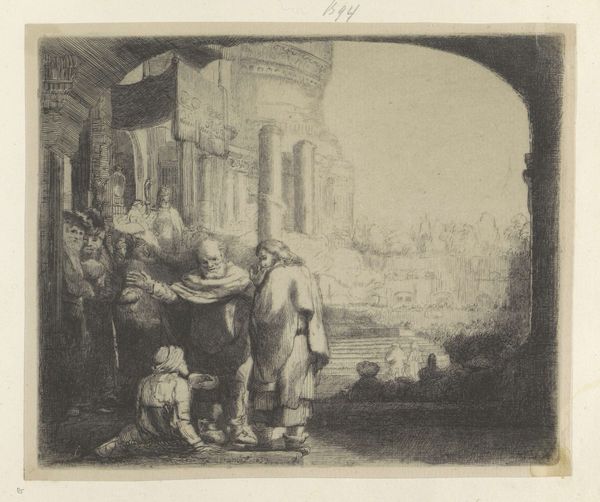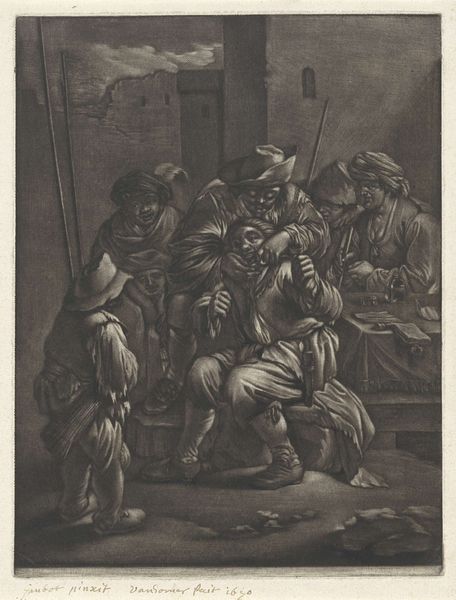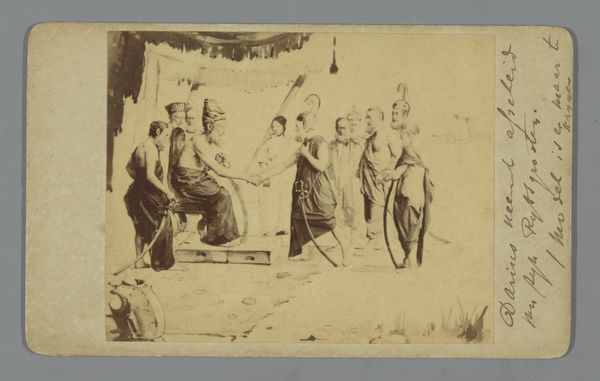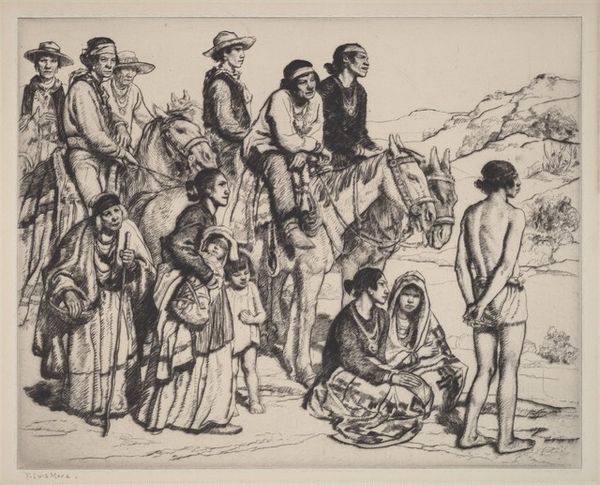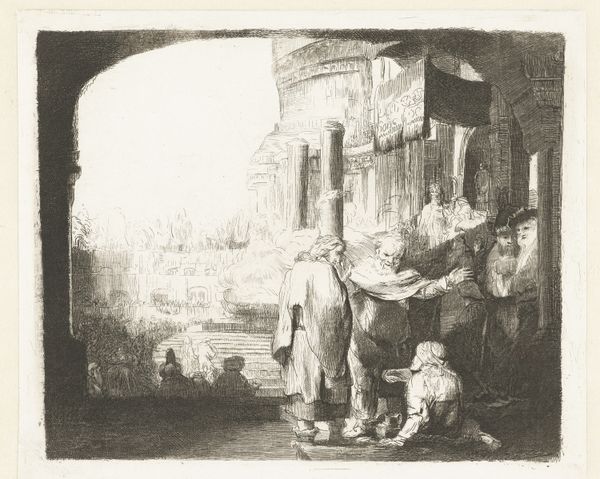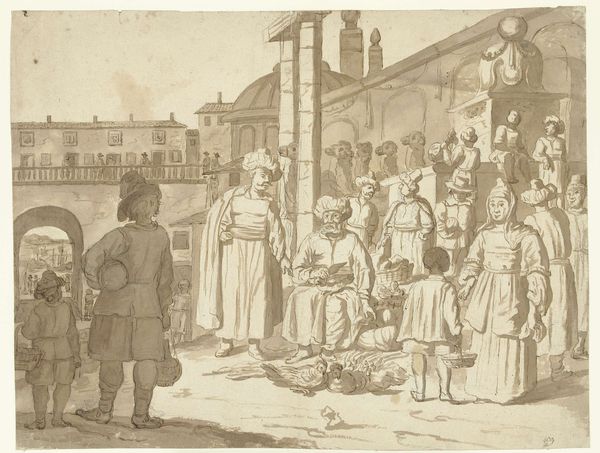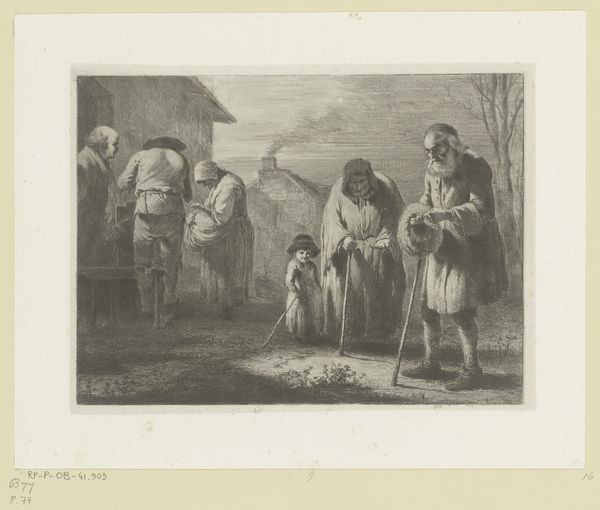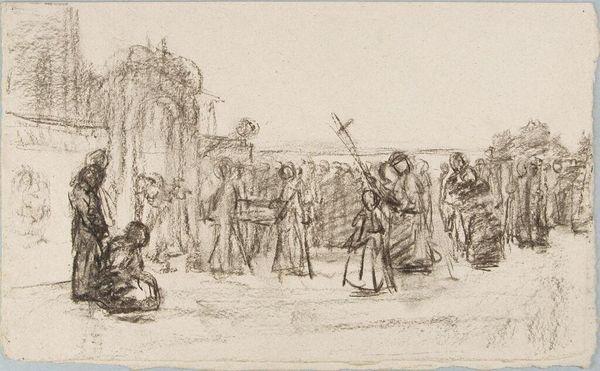
painting, oil-paint
#
narrative-art
#
painting
#
oil-paint
#
charcoal drawing
#
figuration
#
oil painting
#
christianity
#
history-painting
#
realism
#
christ
Copyright: Public domain
Curator: "The Young Carpenter," an oil painting by Wilhelm Kotarbinski, depicts what appears to be a youthful Christ figure observing carpenters at work. What strikes you most immediately? Editor: It's the tonal unity, the almost monochromatic palette. This sepia wash unifies the scene, yet it mutes any potential dynamism. The brushstrokes are broad, giving an unfinished quality that contrasts sharply with the gravity of the subject matter hinted at. Curator: I see it as a masterful interpretation of archetypes. The carpenter, so central to Christian symbolism, transcends mere craft. Notice how the figure on the left stares into the distance. There is a recognition of an unfolding destiny, the young man holding his chest is in awe of what he beholds before him. This is echoed, in much smaller detail, by a younger boy among the carpenters. Editor: Yes, and that cross under construction really anchors the scene, formally. Horizontals and verticals intersecting, a literal and symbolic crux around which everything else is composed. Do you find it a bit too on-the-nose, the foreshadowing? Curator: The cross is certainly a prominent symbol, impossible to ignore given its central position and crude construction, but it's the contextual clues it provides to the central figure that matter more. These choices act as anchors for cultural memory, guiding our understanding and emotional connection. They solidify Kotarbinski’s intent. Editor: Though I agree about its centrality, I see it working best through its relationship with other shapes. For instance, look at how the poses mirror or contrast to create rhythm. See the carpenter, bent with labor, and the young man standing opposite with his back against a rigid structure in defiance of it. Kotarbinski uses line and form to establish meaning just as powerfully. Curator: It’s fascinating to consider the cyclical nature of symbols; in every creation story is a tale of death, a concept so powerfully delivered through his choice of subject. In its own way it reveals as much about our own interpretations as it does Kotarbinski’s. Editor: It makes you aware of just how much our cultural coding can affect one's interpretations. Thinking formally clarifies the dynamics. Curator: Indeed. These shared references echo throughout art history, shaping our experience whether consciously or subconsciously. Editor: So true. The art resides in how it makes those concepts palpable through artistic arrangement.
Comments
No comments
Be the first to comment and join the conversation on the ultimate creative platform.
